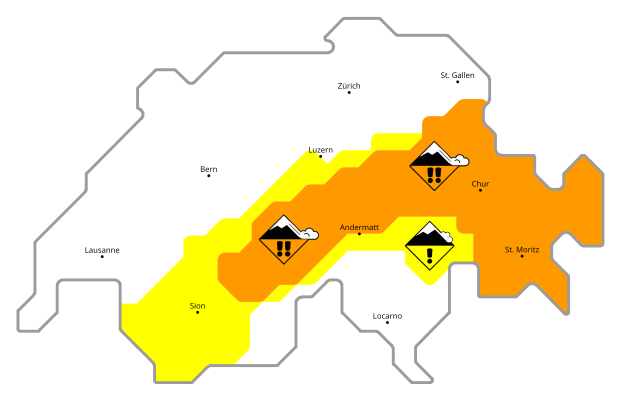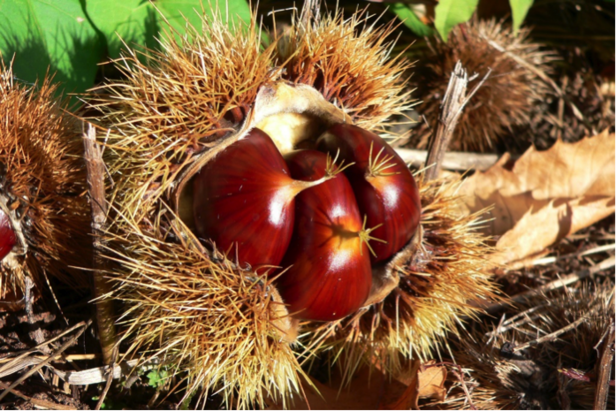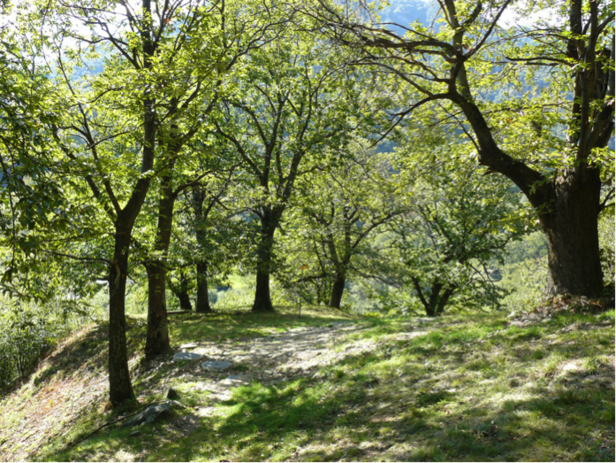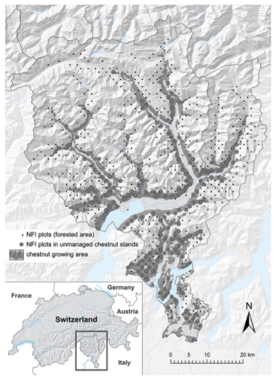15.11.2021 | Gottardo Pestalozzi | News WSL
The sweet chestnut is widespread in places already experiencing temperatures expected in Central Europe in the coming decades. Does this make it a promising tree species for forests north of the Alps? Yes and no, say experts from the Swiss Federal Institute for Forest, Snow and Landscape Research WSL in a new study.
On the surface, there are some indications that the sweet chestnut (Castanea sativa Mill.) could spread or should be planted in Central Europe as global warming escalates. This is because the tree species is mainly found south of the Alps, an area already experiencing temperatures that scientists expect to see in Central Europe in the foreseeable future. The question for the forestry sector is whether promoting the chestnut as a forest tree could be effective.
Insight from National Forest Inventory data
To answer this question, a team from WSL used data from the Swiss National Forest Inventory (NFI) to compare the survivability of the chestnut with that of other tree species found in southern Switzerland. Based on these data, an article published in the Swiss Forestry Journal comprehensively describes the development dynamics in the forests of South of the Alps, in which the sweet chestnut plays a central role.
People have cultivated the chestnut for its fruit and timber for centuries. The tree is a valuable component of protection forests and is also an important source of secondary products such as honey. The chestnut is the most important tree species in southern Switzerland, both culturally and in terms of landscape. Today's chestnut forests, however, are the result of many years of intensive cultivation. Until now, no research had been done into whether the tree species would be naturally competitive enough to thrive in future conditions.
Drought and gall wasp take their toll on the chestnut
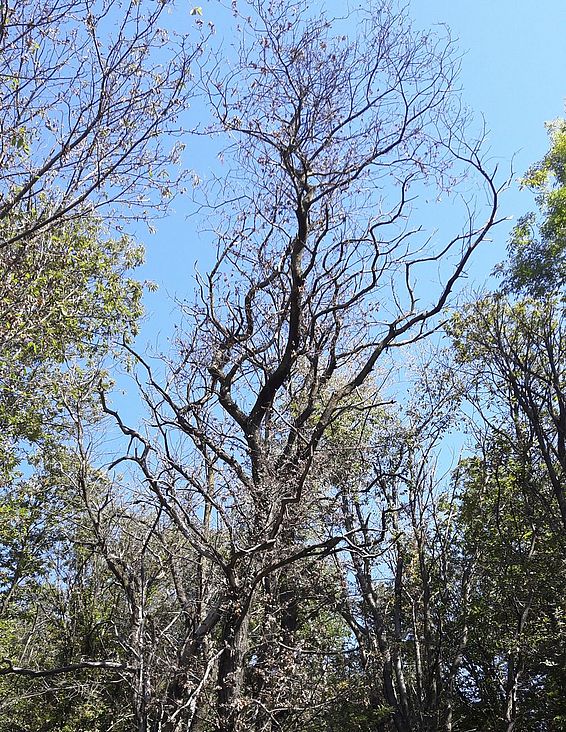
Cultivated chestnuts can live for over 700 years. Under natural conditions, however, the sun-loving chestnut comes off worse in competition with other tree species. The NFI data show that the chestnut is already facing considerable difficulties in the Southern Alps. Their young trees are at a disadvantage when competing with other species such as the shade-tolerant, shady beech. Chestnuts are also more likely to die if they grow in dry conditions, contract diseases or are grazed by goats and game. On the other hand, the tree is less susceptible to disturbance by forest fire than other forest trees. The data show high mortality over the past three decades with a clear acceleration in recent years, especially where the tree has been exposed to repeated infestations of the Asianchestnut gall wasp (Dryocosmus kuriphilus), which has been established in the region since 2009. Populations of this wasp are now controlled by a natural enemy (Torymus sinensis), which was introduced in Italy as a biocontrol agent. The beneficial effect of this parasitoid took however place with some years of delay, by which time the chestnut gall wasp had caused significant damage to the country's trees.
The results of the new study, which is published in the international journal Forest and Ecology Management, suggest that the chestnut is not a future-proof tree species per se. Forest managers should be aware that it may not be the best option in dry sites, given the expected rise in summer temperatures and increasing prevalence of dry spells. However, on suitable sites and with sufficient care, the species may be a good choice for producing high-quality timber.
Swiss National Forest Inventory (NFI)
The Swiss National Forest Inventory (NFI) records the current state and the changes of the Swiss forest. The survey obtains data about trees, stands, sample plots as well as data from enquiries at the local forest service. We publish results about forest area, stem count, volume, increment, yield and many more.
The NFI is carried out by the Swiss Federal Institute for Forest, Snow and Landscape Research (WSL) in collaboration with the Forest Division at Federal Office for the Environment (FOEN). The WSL is responsible for the planning, survey and analysis, as well as the scientific interpretation and publication of the NFI. The political interpretation and implementation is done by the Forest Division.
The inventory was carried out for the first time in 1983–1985 (NFI1), followed by three additional surveys in 1993–1995 (NFI2), 2004–2006 (NFI3), and 2009–2017 (NFI4). Since 2009, data have been collected continuously over a nine-year period. Currently, the fifth inventory is underway from 2018–26 (NFI5).
Links
Publications
Contact
Copyright
WSL and SLF provide the artwork for imaging of press articles relating to this media release for free. Transferring and saving the images in image databases and saving of images by third parties is not allowed.
